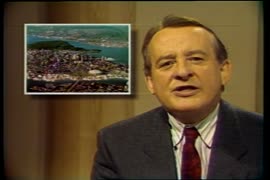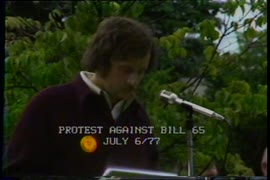- AM1576-S6-2-: 2011-010.2703
- Item
- 1986
Item is a videocassette containing a documentary about the city of Vancouver and Vancouver life, developed for the centennial celebrations. It includes a short introduction to the history of the city up to the 1920s using historical photographs, some film footage of First Nations peoples, and voiceover narrative.
The next section focuses on transportation, featuring scenes of airplanes, the BC ferry, the Seabus, the SkyTrain, ships in the harbour, steamboats, and cruise ships. The focus shifts towards nature and leisure activities as Stanley Park is explored with a historical photograph montage followed by film footage of park and aquarium scenes, including polar bears, penguins, river otters and killer whales. Grouse Mountain is illustrated through shots of the gondola, ski lift, and scenes of skiing. Other sport scenes include sailing ships, ocean and river kayaking, car races, bicycle races, horse races, hockey, football, boxing, golf, soccer and tennis. Life on the water is emphasised with a section on the bathtub race and associated celebrations, beach scenes, and a paddle boat tour around various Vancouver landmarks.
The next section contains a presentation of the centennial theme song ‘The Vancouver Song’ or ‘Vancouver (you'll always look like home to me)’ over a montage of scenes of the Expo Centre, the harbour, downtown, and Stanley Park.
The documentary concludes with scenes of the city at night, including Granville Island, Robson Square, neon signs downtown and at Chinese restaurants, the Expo Centre illuminated with Expo 86 lighting and shots of the sunset over the bay.
R.R. Productions











